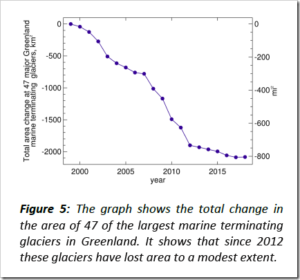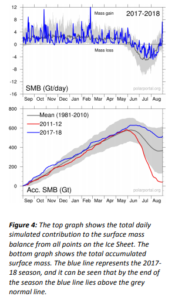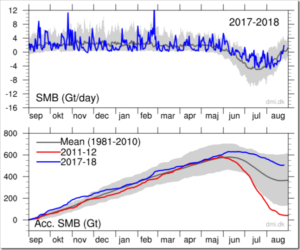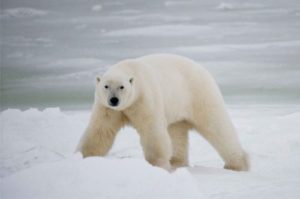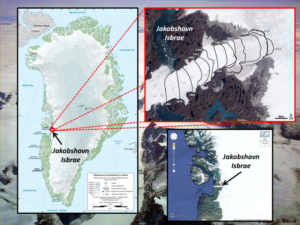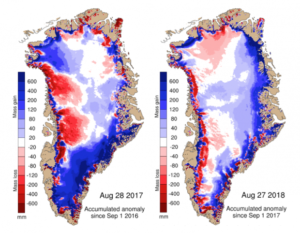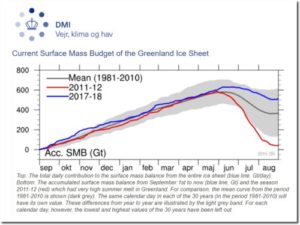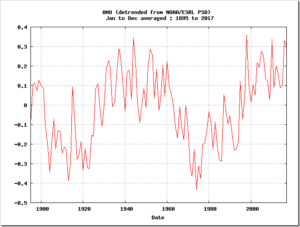by University of South Florida (USF Innovation), July 19, 2019 in ScienceDaily/Nature
-
Greenland’s more than 860,000 square miles are largely covered with ice and glaciers, and its melting fuels as much as one-third of the sea level rise in Florida. That’s why a team of University of South Florida geoscientists’ new discovery of one of the mechanisms that allows Greenland’s glaciers to collapse into the sea has special significance for the Sunshine State.
New radar technology allowed geoscientists to look at Greenland’s dynamic ice-ocean interface that drives sea level rise.
…
Earlier this spring, NASA scientists reported Jakobshavn Glacier, which has been Greenland’s fastest -thinning glacier for the last 20 years, was slowing in its movement toward the ocean in what appears to be a cyclical pattern of warming and cooling. But because Jakobshavn is still giving up more ice than it accumulates each year, its sheer size makes it an important factor in sea level rise, the NASA scientists maintain.
“Our study helps understand the calving process,” Dixon said. “We are the first to discover that mélange isn’t just some random pile of icebergs in front of the glacier. A mélange wedge can occasionally ‘hold the door’ and keep the glacier from calving.”
Journal Reference:
- Surui Xie, Timothy H. Dixon, David M. Holland, Denis Voytenko, Irena Vaňkov�. Rapid iceberg calving following removal of tightly packed pro-glacial mélange. Nature Communications, 2019; 10 (1) DOI: 10.1038/s41467-019-10908-4


